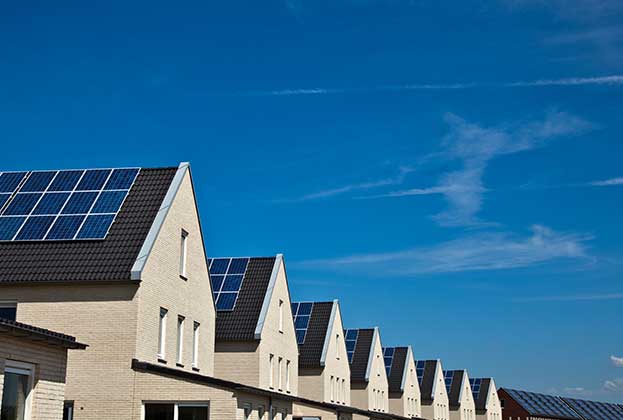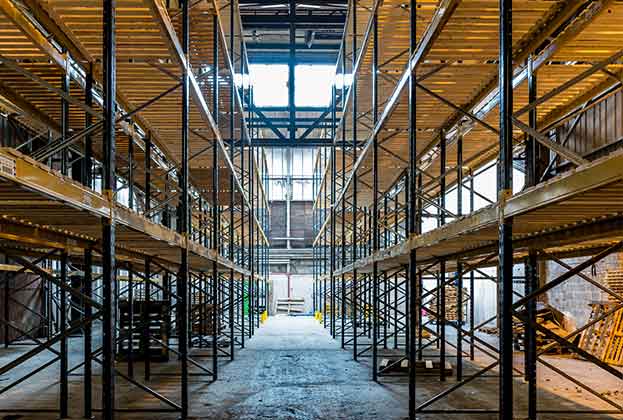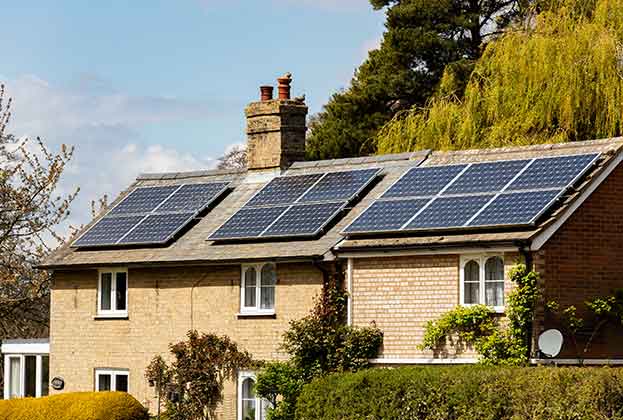With net zero and wider sustainability agendas gathering pace, we look at how green investment can be leveraged against new and existing rural assets
Nature-based solutions are a major part of carbon-neutral operational and investment strategies. However, alongside offsetting, the UK countryside has to balance existing and often competing services, from food production to renewable energy. The rural landscape will have to change as new services are accommodated and existing ones adapt to keep up.
Renewable energy is a core opportunity for green investment in the rural economy. Currently, 27% of UK energy demand is supplied by renewables, meaning significant expansion is needed to reach net zero by 2050. Connecting to the grid can be costly, and energy storage solutions will be essential to smooth out the peaks and troughs of renewable supply. The government has signalled major investment in green technology in pursuit of net zero, so novel energy storage solutions are likely to become more commercially viable in the near future.
Making renewables a viable alternative to the current fossil fuel-based system is not just a storage challenge though. At present, gas power stations have preferential access to the grid, which means that renewable energy suppliers must turn down their systems in periods of excess supply, such as when it is particularly sunny or windy. Addressing this bias against renewables is key to building investor confidence.
As renewables continue to mature, investment models will shift from areas of low competition or subsidy, to a more traditional model focused upon value creation. Accessing land for renewables will remain difficult, but as agricultural policy evolves to accommodate net zero objectives, more opportunities should be available at a viable scale
.
Competition for existing forestry and for land suitable for tree planting has never been greater. On the one hand, external investment in meeting the government’s ambitious tree planting targets is very welcome. On the other, the rapid fuelling of demand and the associated rise in land values mean investors need to be clear about the returns these assets will eventually deliver. The year to September 2021 saw a 60% uplift in average value per net productive hectare for timber investments.
Why is the market for forestry so hot? Firstly, the traditional means of creating revenue through the harvesting and trade of timber remains buoyant. However, more new market entrants are seeking sustainability credentials, both in existing forests and new afforestation sites. Planting trees as a source of secure carbon offsets theoretically makes forestry both a financial and environmental investment.
But there is a growing distinction between commercial forestry and woodland assets managed for carbon. Formal carbon accreditation through the Woodland Carbon Code (WCC) requires new planting schemes to prove additionality, meaning that net carbon savings should be above those which would have occurred anyway. While some commercial schemes will qualify, additionality will need to be proven, for instance through enhanced environmental gain. The WCC, therefore, tends to produce more biodiverse and less commercially productive woodlands.
Consequently, commercial carbon and forestry schemes are increasingly incompatible. Why then are ESG-investors targeting forestry rather than just planting land? Even existing woodland can be actively managed to preserve or increase carbon sequestration, offering owners a quantifiable figure that can be used as an internal 'inset' on a carbon balance sheet. The 'value' investors derive from owning these assets appears to be a much more holistic term and places these assets outside the scope of purely financial returns.
Similar opportunities could be found through bringing more existing woodland back into management, as well as hedgerow creation, landscape partnerships or peatland schemes. Partnering with farmers and landowners, rather than a direct acquisition model, may also help unlock opportunities as the supply of freehold opportunities is highly constrained.
Few sectors touch on so many of the UN’s Sustainable Development Goals as farming, but despite the presence of green credentials and counter-cyclical and counter-inflationary characteristics, lower investment yields make agriculture less appealing than other property classes. Is all that about to change?
Most farmers will be focused on government announcements regarding the transition away from income support to providing services to the environment. Selling carbon stored in agricultural soils is the panacea many farmers are hoping for to replace lost CAP income, but like any farm asset, owners will need to ensure they have enough for their own needs before selling the asset to third parties.
However, the shift in carbon thinking should not be about just income, but also accountability. Any farmer seeking access to bank finance or insurance will have to start disclosing more environmental impact information, and institutions with land let to farmers will require the same information.
Few sectors touch on so many of the UN’s sustainable development goals as farming, making it a prime opportunity for investors
Emily Norton, Head of Rural Research, Rural, Energy & Projects
Farming must undertake a significant transformation to achieve net zero. The transition may present options for ESG-hungry investors to help deliver the infrastructure and technology needed on farms to reduce emissions. A note of caution for investors in land looking for formal carbon offsets is that verification of these offsets often requires permanent land-use change. As political awareness of the impact of this on existing land use patterns increases, nature-based solutions that enhance, or at least don’t undermine, national food security and rural communities will become more valuable.
In terms of farming itself, methods that avoid reliance on chemistry and fossil fuels are needed. The regenerative agriculture movement and a tripling in the cost of artificial fertiliser since 2020 as a result of the gas price spike may be the nudges farmers need to embrace this. As supply chains increasingly switch to more sustainable sources for everything from medicines to plastics, there are multiple opportunities in the bio-economy for innovative growers. A contractual approach has been key to bringing niche crops into the mainstream in the past, and a coalition of like-minded growers would be the most powerful force for change while also ensuring that farming communities are provided a ‘Just Transition’ in land-based activities.
Read the other articles within Spotlight: Real Estate and the Carbon Challenge below
.jpg)



